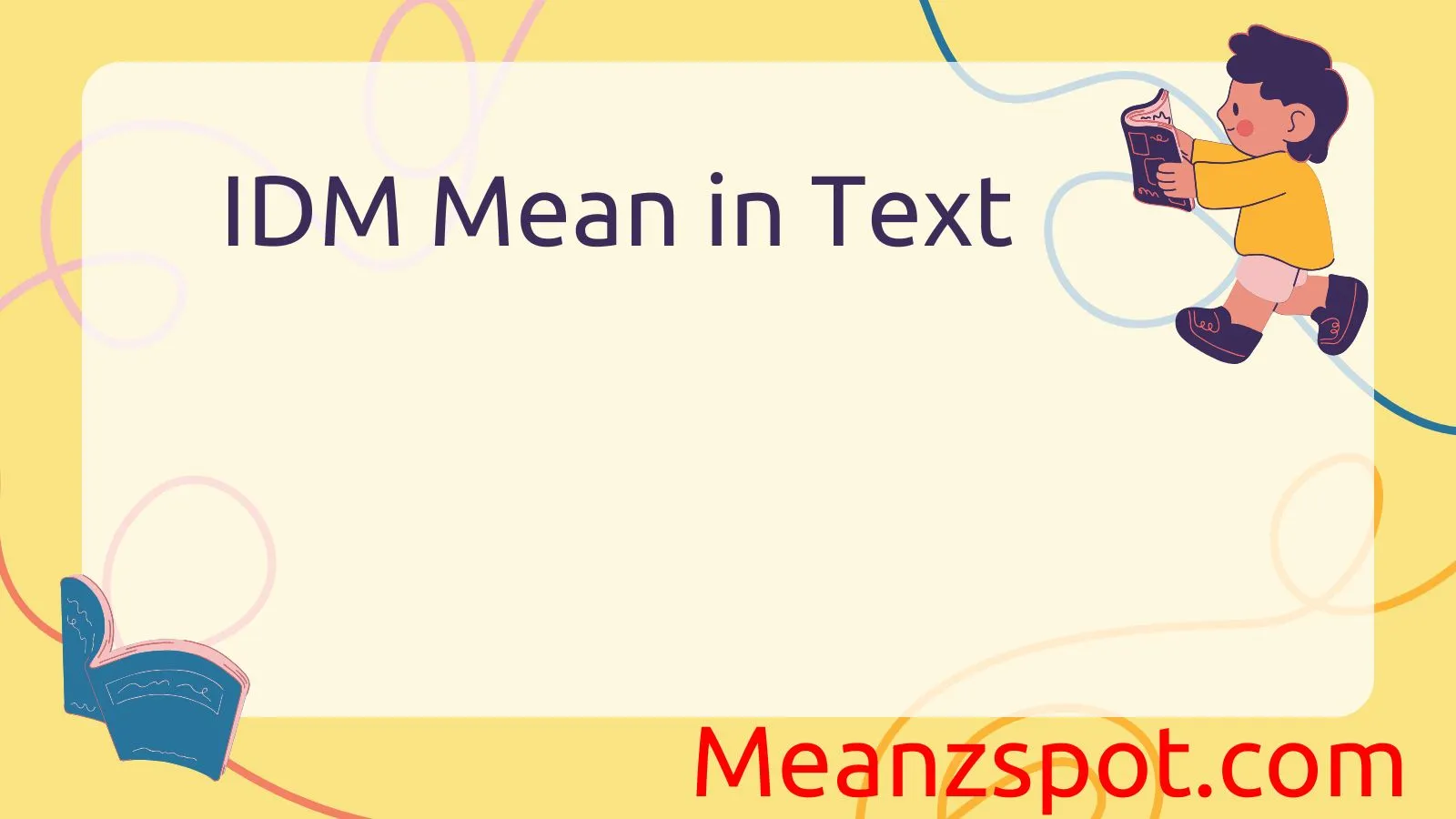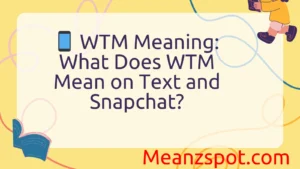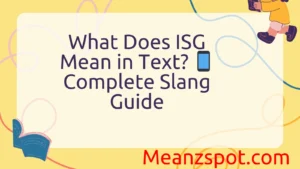In the world of texting and online messaging, new abbreviations pop up every day—and IDM is one of the trending slang terms that’s gained popularity across platforms like Snapchat, Instagram, and TikTok. If you’ve ever seen someone drop “IDM” in a conversation and didn’t quite get what they meant, you’re not alone.
This updated guide will break down what IDM really means in text, how it’s commonly used, and why understanding it matters. Whether you’re chatting with friends or reading through comment threads, knowing the true meaning of IDM helps you stay in the loop and respond appropriately.
Spoiler: IDM doesn’t always mean what you think, and its tone can change depending on the context. Let’s dive into the full breakdown so you never get caught guessing again.
Definitions & Meaning
“IDM” most commonly stands for “I don’t mind” in text communication. It’s a casual, non-confrontational way of expressing neutrality or willingness. People use it to show they are okay with a suggestion, plan, or idea without expressing strong preferences.
Example:
- Person A: “Do you want pizza or burgers tonight?”
- Person B: “IDM, whatever you prefer!”
In this context, “IDM” indicates flexibility and a relaxed attitude. Unlike a direct “yes” or “no,” it softens the response, allowing for open-ended decision-making.
However, “IDM” can occasionally take on other meanings in niche contexts:
- In music or culture discussions: IDM may stand for Intelligent Dance Music—a genre of electronic music.
- In software circles: IDM might refer to Internet Download Manager, a popular tool for managing downloads.
Still, when seen in personal texts, chats, or social media, “I don’t mind” is by far the most common interpretation.
Origins & History
The phrase “I don’t mind” has long been part of everyday English, used to indicate indifference or openness to suggestions. As texting became more prevalent, users began shortening longer expressions to save time and effort—giving rise to acronyms like “IDM.”
The acronym likely gained traction in the late 2000s and early 2010s, around the same time other expressions like “LOL” (laugh out loud), “BRB” (be right back), and “IDK” (I don’t know) became mainstream. “IDM” fits comfortably in this ecosystem of digital shorthand, appealing especially to younger users who favor quick, informal exchanges.
As messaging apps, forums, and social media platforms became dominant forms of communication, “IDM” spread widely. Today, it’s recognized across various platforms, from WhatsApp and Snapchat to Instagram and TikTok comments. Its informal tone and clarity have helped it endure over time as a go-to response in casual conversation.
Usage in Different Contexts
Social Media
On platforms like Instagram, TikTok, and Twitter, “IDM” often pops up in comment threads and replies. It’s used when someone is indifferent to a topic or doesn’t object to a suggestion.
Example:
- Comment: “Would you guys be okay with watching a movie instead?”
- Reply: “IDM tbh.”
Text Messaging
In private conversations, “IDM” helps move decisions forward without conflict. It’s a polite way to show you’re open to others’ choices.
Example:
- “Do you care if we meet at 5 instead of 4?”
- “Nah, IDM!”
Professional Settings
In more formal or workplace conversations, using “IDM” might be seen as too casual. Instead, phrases like “I have no preference” or “I’m okay with that” are often more appropriate. However, in informal team chats like Slack or Discord, “IDM” may still appear among coworkers.
Pop Culture & Entertainment
Occasionally, “IDM” might refer to Intelligent Dance Music when discussing music genres or artists. But unless the context is specifically about music, this usage is less common.
Tip: Always consider the topic and tone of the conversation to interpret “IDM” correctly.
Common Misunderstandings & Clarifications
Misreading as a Negative
Some users mistake “IDM” as dismissive or uninterested, when in fact, it often expresses willingness and flexibility. Tone doesn’t always come through in text, which can lead to confusion.
Confusion with Similar Acronyms
“IDM” can easily be mixed up with:
- IDK – “I don’t know”
- IMD – Could be a typo or represent something entirely different (e.g., “in my dreams” in some creative writing)
Context-Specific Confusion
As mentioned earlier, “IDM” could also stand for “Intelligent Dance Music” or “Internet Download Manager.” It’s essential to assess the context to know which meaning applies. If someone is talking about file downloads or music genres, the interpretation shifts.
To avoid misunderstandings, many users provide context or avoid acronyms altogether in more formal or unfamiliar conversations.
Alternatives & Synonyms
While “IDM” is convenient, there are many alternative expressions that can convey the same idea, depending on the tone and setting:
Informal Alternatives:
- “Don’t care”
- “I’m good with anything”
- “Whatever works”
- “Up to you”
- “Fine by me”
Formal Alternatives:
- “I have no preference”
- “I’m open to either option”
- “I’m flexible with that”
- “That’s acceptable to me”
Using full phrases, especially in new conversations or professional settings, helps ensure clarity and avoids sounding overly casual.
Frequently Asked Questions
1. What does IDM stand for in a text message?
IDM stands for “I don’t mind.” It indicates that the sender has no strong preference and is okay with any option.
2. Is IDM rude or dismissive?
Not typically. It usually conveys openness and flexibility. However, tone and context matter—some might misread it as disinterest if overused.
3. Can IDM mean something else besides “I don’t mind”?
Yes, it can also refer to Intelligent Dance Music or Internet Download Manager, but these meanings are context-specific and less common in general texting.
4. Is IDM appropriate in professional communication?
It depends. In casual team chats, it might be acceptable. For formal emails or workplace discussions, it’s better to use full phrases like “I have no preference.”
5. Is IDM used globally?
Yes, but it’s most common in English-speaking digital spaces. Non-native speakers may not recognize it without explanation.
6. What’s the difference between IDM and IDK?
IDM = I don’t mind; IDK = I don’t know. They serve different purposes and shouldn’t be used interchangeably.
7. How should I respond to someone who says “IDM”?
Feel free to make a decision or offer a suggestion. “IDM” usually means they’re letting you take the lead.
Conclusion
In the age of fast-paced digital interactions, acronyms like IDM play a key role in how we communicate. Most often meaning “I don’t mind,” IDM is a simple yet effective way to show flexibility and openness in conversation. Whether in text messages, comment sections, or casual chats, it serves as a helpful shorthand that keeps communication efficient and friendly.
However, as with any acronym, it’s crucial to understand the context. Misinterpretation can easily occur, especially when IDM’s other meanings—like “Intelligent Dance Music” or “Internet Download Manager”—enter the picture. For clear communication, it’s sometimes better to use full phrases, particularly in professional or unfamiliar conversations.
Ultimately, mastering digital language like IDM helps foster clearer, smoother conversations—one acronym at a time. Now that you know what IDM means in text, you’re better equipped to navigate modern messaging with ease and confidence.



